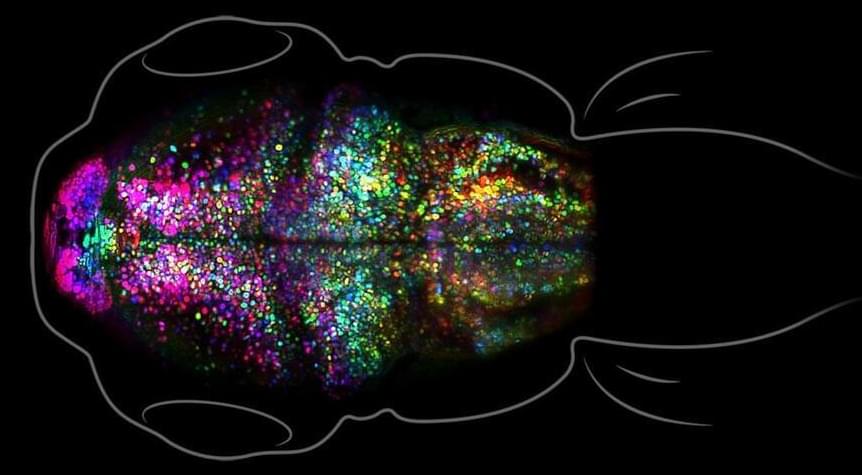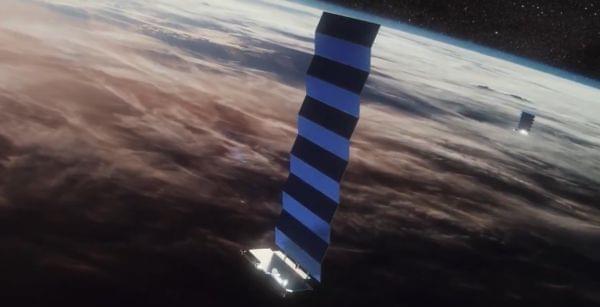While watching a fearful memory take shape in the brain of a living fish, neuroscientists see an unexpected level of rewiring occur in the synaptic connections.
In this video Bill Andrews summarizes in 19 minutes his extensive research on telomeres, aging, and his proposal to cure aging. Bill Andrews is an American molecular biologist and gerontologist, founder and CEO of the biotech company Sierra Sciences.
Bill Andrews summarizes in 19 minutes his extensive and prolific research on telomeres, aging, and the cure for aging.
The video, originally released by Bill Andrews in february 2022, among other things, covers in little less than 20 minutes the following:
Russia’s attacks on Ukraine continue to take lives and destroy infrastructure as the country invades. This infrastructure damage has disrupted internet access in Ukraine, leading a government official to publicly request Starlink satellite internet access for the country from SpaceX CEO Elon Musk. Musk obliged, activating Starlink service in Ukraine and sending additional hardware. But with continued attacks on infrastructure, how will Ukraine stay connected?
Fedorov brings up an important point: Even though Starlink operates without the need for traditional internet infrastructure, the Earth-bound hardware still needs power. And, as Russian attacks bombard the country, Ukraine’s internet access will continue to be threatened.
Fedorov’s statement publicly reached out for help acquiring generators to keep Starlink online for Ukrainians. But Musk responded with an alternative suggestion.
“Solar panels + battery pack better than generator, as no heat signature or smoke & doesn’t run out of fuel,” Musk wrote in response on Twitter.
Elon Musk has some ideas.
A mini brain with trillions of petaflops in your pant pocket? Sounds Good!
“This is what we’re announcing today,” said Knowles. “A machine that in fact will exceed the parametric capacity of the human brain.”
That next-gen IPU, he said, would realize the vision of 1960s compute scientist Jack Good, a colleague of Alan Turing’s who conceived of an “intelligence explosion.”
Those synapses are “very similar to the parameters that are learned by an artificial neural network.” Today’s neural nets have gotten close to a trillion, he noted, “so we clearly have another two or more orders of magnitude to go before we have managed to build an artificial neural network that has similar parametric capacity to a human brain.
The company said it is working on a computer design, called The Good Computer, which will be capable of handling neural network models that employ 500 trillion parameters, making possible what it terms super-human ultra-intelligence.
According to data from Nansen, 2.8 million unique addresses hold 11.1 million Axies, alongside 97% of users having a minimum of three Axie nonfungible tokens.
It’s easy to see why: as shockingly powerful mini-processors, neurons and their connections—together dubbed the connectome—hold the secret to highly efficient and flexible computation. Nestled inside the brain’s wiring diagrams are the keys to consciousness, memories, and emotion. To connectomics, mapping the brain isn’t just an academic exercise to better understand ourselves—it could lead to more efficient AI that thinks like us.
But often ignored are the brain’s supporting characters: astrocytes—brain cells shaped like stars—and microglia, specialized immune cells. Previously considered “wallflowers,” these cells nurture neurons and fine-tune their connections, ultimately shaping the connectome. Without this long-forgotten half, the brain wouldn’t be the computing wizard we strive to imitate with machines.
In a stunning new brain map published in Cell, these cells are finally having their time in the spotlight. Led by Dr. H. Sebastian Seung at Princeton University, the original prophet of the connectome, the map captures a tiny chunk of the mouse’s visual cortex, less than 1,000 times smaller than a pea. Yet jam-packed inside the map aren’t just neurons; in a technical tour de force, the team mapped all brain cells, their connections, blood vessels, and even the compartments inside cells that house DNA and produce energy.
Ford this morning said it’s separating its electric vehicle and internal combustion businesses into separate units. Why it matters: The creation of distinct business lines — called “Model e” and “Ford Blue” — underscores how auto giants are reorienting around EV development. Get market news worthy of your time with Axios Markets. Subscribe for free. How it works: Ford said the two units would be “strategically interdependent” and share relevant tech. Together with the Ford Pro commercial services line launched last year, Ford said the three units will begin to separately report profits and losses in 2023.
Life on the Early Moon?
Posted in space
Earth´s Moon may have been habitable and hosted life billions of years ago: a hypothesis re-evaluated.
An Outrageous Hypothesis Re-Evaluated.
It should come as little surprise that pioneering work in biological robotics is as controversial as it is exciting. Take for example the article published in December 2021 in the Proceedings of the National Academy of Sciences by Sam Kreigman and Douglas Blackiston at Tufts University and colleagues. This article, entitled “Kinematic self-replication in reconfigurable organisms,” is the third installment of the authors’ “xenobots” series.
Engineers working to reverse the proliferation of greenhouse gases know that in addition to reducing carbon dioxide emissions we will also need to remove carbon dioxide from power plant fumes or from the skies. But, what do we do with all that captured carbon? Matteo Cargnello, a chemical engineer at Stanford University, is working to turn it into other useful chemicals, such as propane, butane or other hydrocarbon fuels that are made up of long chains of carbon and hydrogen.
“We can create gasoline, basically,” said Cargnello, who is an assistant professor of chemical engineering. “To capture as much carbon as possible, you want the longest chain hydrocarbons. Chains with eight to 12 carbon atoms would be the ideal.”
A new catalyst, invented by Cargnello and colleagues, moves toward this goal by increasing the production of long-chain hydrocarbons in chemical reactions. It produced 1,000 times more butane—the longest hydrocarbon it could produce under its maximum pressure—than the standard catalyst given the same amounts of carbon dioxide, hydrogen, catalyst, pressure, heat and time. The new catalyst is composed of the element ruthenium—a rare transition metal belonging to the platinum group—coated in a thin layer of plastic. Like any catalyst, this invention speeds up chemical reactions without getting used up in the process. Ruthenium also has the advantage of being less expensive than other high-quality catalysts, like palladium and platinum.









